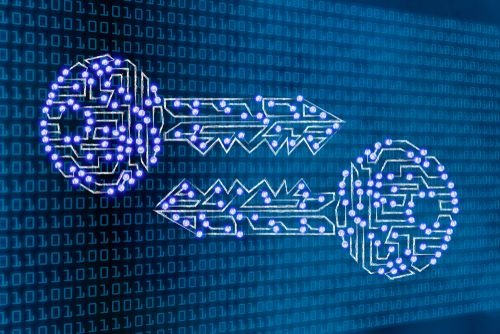
In recent years, advancements in artificial intelligence (AI) have transformed our daily lives, from personal assistants like Siri and Alexa to recommendation systems on Netflix and Spotify. However, alongside these conveniences comes a growing concern: AI’s potential to threaten privacy. As governments and private companies increasingly deploy AI-powered surveillance technologies, questions arise about where to draw the line between security, convenience, and the fundamental right to privacy. This article delves into the role of AI in surveillance, its implications for privacy, and the steps we can take to protect individual rights in an age of pervasive digital monitoring.
What is the Surveillance State?
A surveillance state refers to a government or authority that extensively monitors its citizens’ activities, both online and offline, using technology and data collection. This monitoring can range from tracking internet usage and communications to deploying cameras and facial recognition systems in public places. While surveillance can serve legitimate purposes, such as preventing crime and ensuring national security, it also poses significant risks to civil liberties, particularly when it becomes invasive or lacks oversight.
How AI is Used in Surveillance
AI has revolutionized surveillance by enabling the processing and analysis of vast amounts of data at unprecedented speed and accuracy. Here are some of the key ways AI is used in surveillance:
1. Facial Recognition Technology
Facial recognition technology uses AI algorithms to identify individuals by analyzing facial features captured in photographs or video footage. It is already in use by law enforcement agencies, airports, and private businesses around the world to verify identities, find missing persons, or enhance security. However, it is also employed for more controversial purposes, such as tracking citizens’ movements, identifying participants in protests, or even predicting criminal behavior based on appearance.
2. Predictive Policing
Predictive policing uses AI algorithms to analyze historical crime data and identify patterns that help law enforcement predict where and when crimes are likely to occur. This approach aims to optimize police resources and improve crime prevention strategies. However, critics argue that it can reinforce existing biases in policing, disproportionately targeting specific communities based on flawed or biased data.
3. Social Media Monitoring
AI tools are increasingly used to monitor social media platforms for signs of unrest, potential threats, or public sentiment analysis. Governments and corporations use AI to analyze posts, comments, and shared content to detect patterns or predict behavior. While this can help identify security risks or public health trends, it also raises concerns about mass surveillance and the erosion of free expression.
4. Smart Cities and Internet of Things (IoT)
Smart cities deploy AI to manage public services more efficiently by integrating data from various sources, such as traffic cameras, public transportation, and environmental sensors. However, the data collected in smart cities, which includes information from public and private spaces, can also be used for surveillance purposes. IoT devices, like smart home systems and connected appliances, can generate vast amounts of personal data that could potentially be accessed by third parties without consent.
The Impact of AI on Privacy
While AI-driven surveillance offers numerous benefits in terms of security and convenience, it also poses significant challenges to individual privacy. Here are some of the most pressing concerns:
1. Mass Data Collection
AI relies on large datasets to function effectively. As a result, surveillance systems powered by AI often require the continuous collection of data on individuals’ behaviors, locations, and communications. This can lead to mass data collection, where information is gathered not just on specific suspects or threats, but on entire populations. The more data collected, the more detailed the profile that can be built about an individual’s habits, preferences, and movements, which can be intrusive and violate privacy rights.
2. Lack of Consent and Transparency
One of the biggest concerns with AI-driven surveillance is the lack of consent and transparency. Often, individuals are unaware that they are being monitored or that their data is being collected and analyzed. For example, facial recognition cameras in public spaces do not typically alert passersby that they are being scanned. Similarly, social media users may not know their posts are being monitored by AI tools for surveillance purposes. The absence of clear regulations and guidelines makes it difficult for individuals to understand when and how they are being surveilled and what happens to their data.
3. Risk of Bias and Discrimination
AI systems are only as good as the data they are trained on. If the data used to develop these systems is biased, the AI’s decisions and predictions will likely be biased as well. For example, facial recognition technology has been shown to be less accurate in identifying people of color and women compared to white men. This can lead to false identifications, wrongful arrests, or unfair treatment based on race, gender, or other characteristics. Predictive policing algorithms can also perpetuate and exacerbate existing biases by disproportionately targeting minority communities.
4. Erosion of Civil Liberties
The use of AI in surveillance can have a chilling effect on free expression, association, and the right to protest. When people know they are being monitored, they may be less likely to speak freely, associate with controversial groups, or participate in protests. This erosion of civil liberties can have a profound impact on democratic societies, where freedom of expression and assembly are fundamental rights.
5. Data Security and Misuse
The more data is collected, the greater the risk that it could be hacked, leaked, or misused. Sensitive personal information gathered through AI surveillance could fall into the wrong hands, leading to identity theft, blackmail, or other malicious activities. Even when data is securely stored, there is always the potential for misuse by those with access to it, whether by government agencies or private companies.
Is AI a Threat to Privacy?
Given these concerns, it is fair to ask whether AI is a threat to privacy. The answer is not straightforward. On one hand, AI can enhance security and provide valuable insights that improve public services and economic opportunities. On the other hand, without proper oversight and regulation, AI can become a tool for mass surveillance and control, threatening privacy and civil liberties.
Whether AI poses a threat to privacy depends largely on how it is implemented and governed. Here are some key factors that determine AI’s impact on privacy:
1. Regulation and Oversight
The level of regulation and oversight in place plays a critical role in determining whether AI is a threat to privacy. In many countries, privacy laws have not kept pace with technological advancements, leaving gaps that can be exploited by those who wish to use AI for surveillance purposes. Strong legal frameworks, clear guidelines, and independent oversight bodies can help ensure that AI is used responsibly and ethically.
2. Purpose and Scope of Surveillance
The purpose and scope of surveillance also matter. Surveillance that is targeted, transparent, and proportional to a legitimate aim, such as preventing terrorism or serious crime, is less likely to be seen as a threat to privacy. However, when surveillance is broad, indiscriminate, and lacks accountability, it becomes more problematic. Governments and organizations must clearly define the purposes for which AI is used and ensure that it does not extend beyond those purposes.
3. Technology Design and Implementation
The way AI technologies are designed and implemented can also influence their impact on privacy. Privacy-by-design principles, which incorporate privacy considerations into the development process from the outset, can help minimize the risks. For example, using anonymization techniques to strip personal identifiers from data can reduce privacy risks while still allowing for valuable analysis. Similarly, deploying AI tools with built-in accountability and transparency features can help build trust and reduce concerns.
4. Public Awareness and Consent
Increasing public awareness about AI surveillance and ensuring that individuals give informed consent when their data is collected is crucial. Transparency initiatives, such as clear notifications about the presence of surveillance systems and how data is being used, can empower people to make informed choices about their privacy. Providing people with options to opt out or control the use of their data can also help alleviate concerns.
Steps to Protect Privacy in an AI-Driven Surveillance State
Given the potential threats posed by AI-driven surveillance, it is essential to take steps to protect privacy while still allowing for legitimate uses of AI. Here are some strategies that can help strike the right balance:
1. Strengthen Privacy Laws and Regulations
Governments should strengthen privacy laws and regulations to address the unique challenges posed by AI. This includes updating existing laws to cover new AI technologies, establishing clear guidelines for the use of AI in surveillance, and creating independent oversight bodies to monitor compliance. Stronger privacy protections can help prevent abuses and ensure that AI is used in ways that respect individual rights.
2. Promote Privacy-Enhancing Technologies
Developing and promoting privacy-enhancing technologies, such as encryption, differential privacy, and anonymization techniques, can help protect individuals’ data while still allowing for valuable analysis. Encouraging the use of these technologies can help reduce the risks associated with AI surveillance and build public trust.
3. Enhance Transparency and Accountability
Transparency and accountability are key to mitigating the privacy risks associated with AI surveillance. Governments and organizations should be required to disclose when and how they use AI for surveillance purposes and provide clear information about the data collected, how it is used, and who has access to it. Independent audits and oversight can also help ensure compliance with privacy standards and regulations.
4. Foster Public Awareness and Engagement
Raising public awareness about the implications of AI surveillance and encouraging informed debate on the topic is essential. Governments, civil society organizations, and the tech industry should work together to educate people about their rights, the risks of AI surveillance, and the steps they can take to protect their privacy. Public engagement can help build a more informed and active citizenry that demands greater accountability and transparency.
5. Encourage Ethical AI Development
Encouraging the ethical development of AI technologies is critical to ensuring that they are used in ways that respect privacy and human rights. This includes promoting privacy-by-design principles, developing ethical guidelines for AI use, and fostering a culture of responsibility among AI developers and users. Collaboration between governments, tech companies, and civil society can help create a framework for ethical AI development.
Conclusion
AI has the potential to revolutionize surveillance, offering new tools and capabilities to enhance security, improve public services, and drive economic growth. However, these benefits come with significant privacy risks. Without proper oversight, regulation, and ethical guidelines, AI can become a tool for mass surveillance and control, threatening fundamental rights and freedoms.
To protect privacy in an AI-driven world, we must ensure that AI technologies are used responsibly, transparently, and ethically. This requires a combination of strong legal frameworks, privacy-enhancing technologies, public awareness, and ethical AI development. By taking these steps, we can harness the benefits of AI while safeguarding the privacy and civil liberties that are essential to a free and democratic society.
ALSO READ: The Role of Social Media in Political Polarization






